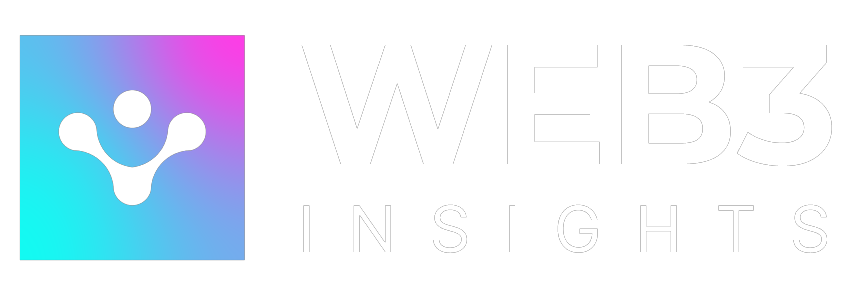
In a blockchain, data is stored, managed, and shared across many computers around the world. Since these computers are part of a peer-to-peer network, disagreements can happen. That’s where consensus mechanisms come in. They provide a way for everyone in the network to agree on what’s right, making sure all the computers (or nodes) in the network stay in sync and the system runs smoothly.
In this article, we’ll explore why consensus mechanisms are so important in blockchain networks. We’ll look at how they keep the system secure, decentralized, and trustworthy. We’ll also discuss the different types of consensus mechanisms, their pros and cons, and how they contribute to the strength and efficiency of blockchain systems.
Understanding Consensus Mechanisms

Consensus mechanisms are a key part of blockchain technology. They help ensure that all the computers (or nodes) in a blockchain network agree on what’s happening. Think of them as a set of rules that everyone in the network follows to make sure transactions are valid and the blockchain stays secure.
In simple terms, a consensus mechanism is the software that helps all the computers in a blockchain system agree on the current state of the data. This is important because it replaces the need for slower, less reliable human checks.
The consensus mechanism works by making sure every computer in the network agrees on a single version of the blockchain’s history. This keeps the data consistent and accurate across the whole network.
Even though there are different types of consensus mechanisms, they all have the same goal: to prevent cheating and ensure everyone in the network follows the same rules.
History of Consensus Mechanisms

When computers and networks started becoming popular in the 1980s and 90s, people created shared databases so that many users could access the same information. These databases were usually stored in one central place, and people accessed them from different computers. Administrators managed these systems, deciding who could access the data and making sure it stayed safe.
Over time, these shared databases developed into programs that spread the data and computing power across different locations. A big challenge involved ensuring that no one could change or access the data. To fix this, a way to automatically manage these systems was needed.
This led to the creation of a system called distributed consensus, where programs on a network agreed on the data using special codes called hashes. A hash is a unique string of numbers and letters that only changes if the original data changes. The programs compared these hashes to make sure they matched.
When all the programs on the network produced the same hash, it meant they all agreed on the data. This process, known as consensus, became an important way to keep data safe and reliable. While Satoshi Nakamoto, the creator of Bitcoin, is often credited with this idea, many people worked on similar concepts long before Bitcoin became famous.
Types of Consensus Mechanisms

Blockchain platforms have created and refined different ways to achieve consensus, or agreement, across the network. Here are the five most common consensus methods:
1. Proof of Work (PoW):
Proof of Work is the original consensus mechanism used in blockchain systems. It relies on a network of miners, or validators, to confirm transactions by solving complex mathematical problems. This energy-intensive process requires specialized computers to find a specific 64-digit hexadecimal number called a hash, which cryptography protects.
The process, known as crypto mining, rewards miners with new crypto tokens and is a widely used method in proof-of-work systems. Examples are Bitcoin, Dogecoin, Litecoin, etc.
Pros: It is one of the most decentralized and secure verification methods and is also praised for its reliability.
Cons: The proof-of-work system has several inefficiencies: slow transaction speeds, high gas and operational fees, and heavy energy consumption, which harms the environment. For example, Bitcoin takes about 10 minutes to process each transaction, using a huge amount of electricity.
2. Proof of Stake (PoS):
In a proof-of-stake (PoS) system, users lock up a certain number of tokens, called staking, to become validators. When you stake tokens, they become temporarily inaccessible but earn rewards while supporting the network. The system randomly awards validation rights, like a lottery, and holding more tokens increases your chances of being chosen. Validators not only process transactions and add blocks to the blockchain but also store data for the community. However, if a validator breaks the rules, they lose their staked tokens. Examples are Ethereum, Cardano, Tezos, Algorand, and so on.
Pros: Ideal for scaling Web3 due to its energy efficiency and low costs, both in gas fees and equipment.
Cons: Less decentralized and secure compared to proof of work, as power tends to concentrate with those holding more tokens.
3. Delegated Proof of Stake (DPoS):
Imagine proof of stake but with an election-like system. In this version, people in the network vote for their favourite delegates by staking their tokens in staking pools. We choose these delegates based on their reputation, believing they are the best at protecting the network. A selected group of top candidates randomly receives the chance to validate transactions. If someone more trustworthy comes along, they can replace a current validator. Examples are EOS, Lisk, Ark, etc.
Pros: It is more financially inclusive, allowing more users to participate,
Cons: It is less decentralized, as power is concentrated in a few hands. It is also more vulnerable to attacks due to the fewer number of people controlling the network.
4. Proof of Authority(PoA):
In private or public blockchains, the proof-of-authority method picks validators based on their reputation instead of their digital assets. A vetting process, which often includes background checks, selects validators. Examples are Xodex, JP Morgan (JPMCoin), VeChain (VET), and Ethereum Kovan testnet.
Pros: This method is scalable and doesn’t need much computing power.
Cons: It reduces decentralization by concentrating power, and validators must be publicly identifiable rather than remain anonymous.
5. Proof of History (PoH)
Proof of History adds timestamps to each block in a blockchain, creating a continuous record of transactions. Developers use it together with other consensus methods like proof-of-work or proof-of-stake.
Pros: It speeds up transactions and keeps decentralization intact while keeping transaction costs low. Solana is a leading example for very fast transaction times, processing blocks every 400 milliseconds.
Cons: The high speed leads to large amounts of data, and only advanced hardware can handle this, making it hard for regular users to become validators.
Why Are Consensus Mechanisms Important in a Blockchain?

Consensus mechanisms are vital to the functionality and security of blockchain technology. Here are the key reasons why they are important:
1. Decentralization and Trust
Consensus mechanisms facilitate decentralized decision-making, allowing a network of peers to collectively agree on the state of the blockchain without relying on a central authority.
This decentralization builds trust among users by distributing power and control, which reduces the risk of manipulation by any single entity.
2. Transaction Validation
They validate all transactions through multiple nodes before adding them to the blockchain. This process prevents fraudulent activities, such as double-spending, where users might attempt to spend the same digital currency more than once. Requiring consensus for each transaction maintains data integrity, ensuring the system records only legitimate transactions.
3. Security Against Attacks
Consensus mechanisms protect the network from various attacks. For instance, mechanisms like Proof of Work (PoW) require significant computational effort to add a block, making it impractical for attackers to alter the blockchain retrospectively. This security feature helps maintain the integrity of the transaction history, making it difficult for malicious actors to corrupt the blockchain.
4. Data Integrity and Immutability
Reaching a consensus and adding a block to the blockchain makes altering it extremely difficult. This immutability preserves the history of transactions accurately, providing a trustworthy record that users can rely on.
5. Distributed Responsibility
Consensus mechanisms distribute the responsibility of transaction validation across all nodes in the network. This distribution ensures that even if some nodes fail or act maliciously, the consensus process can still function effectively, maintaining the overall health and security of the network.
Conclusion
Consensus mechanisms are the backbone of blockchain technology, ensuring that decentralized networks can function securely and reliably. By enabling multiple participants to agree on the validity of transactions without a central authority, these mechanisms play a crucial role in maintaining trust within the system.
As blockchain technology continues to evolve, so too will the consensus mechanisms that drive it. The development of new and more efficient models will likely shape the future of blockchain, potentially solving existing challenges like scalability and environmental impact.








